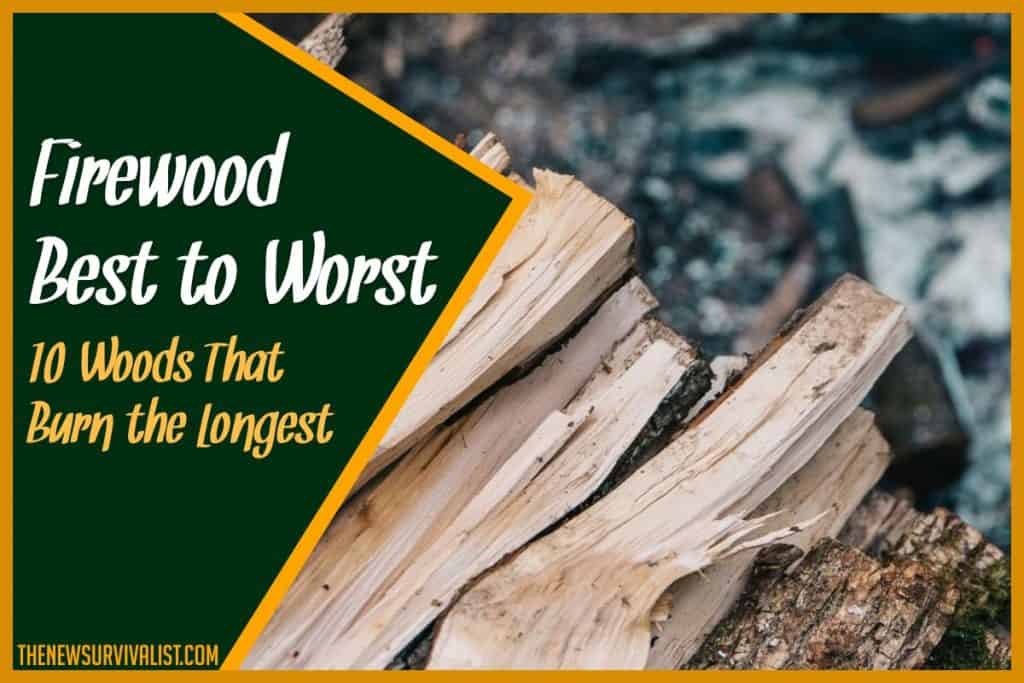Burning firewood provides a cozy ambience during cold winter weather. But, more than this, it gives off adequate heating to help you survive the freezing temperature. Hence, you should know which firewood can burn the longest and keep you warm throughout a cold night.
The primary factors that affect the burning capacity of firewood are heat value, density, and moisture content. Ideal firewood has high heat value, high density, and low moisture content. This type of wood will burn the longest and provide the most heat.
This article will explore the best firewood to burn and which ones you should avoid.
Criteria for Choosing Firewood
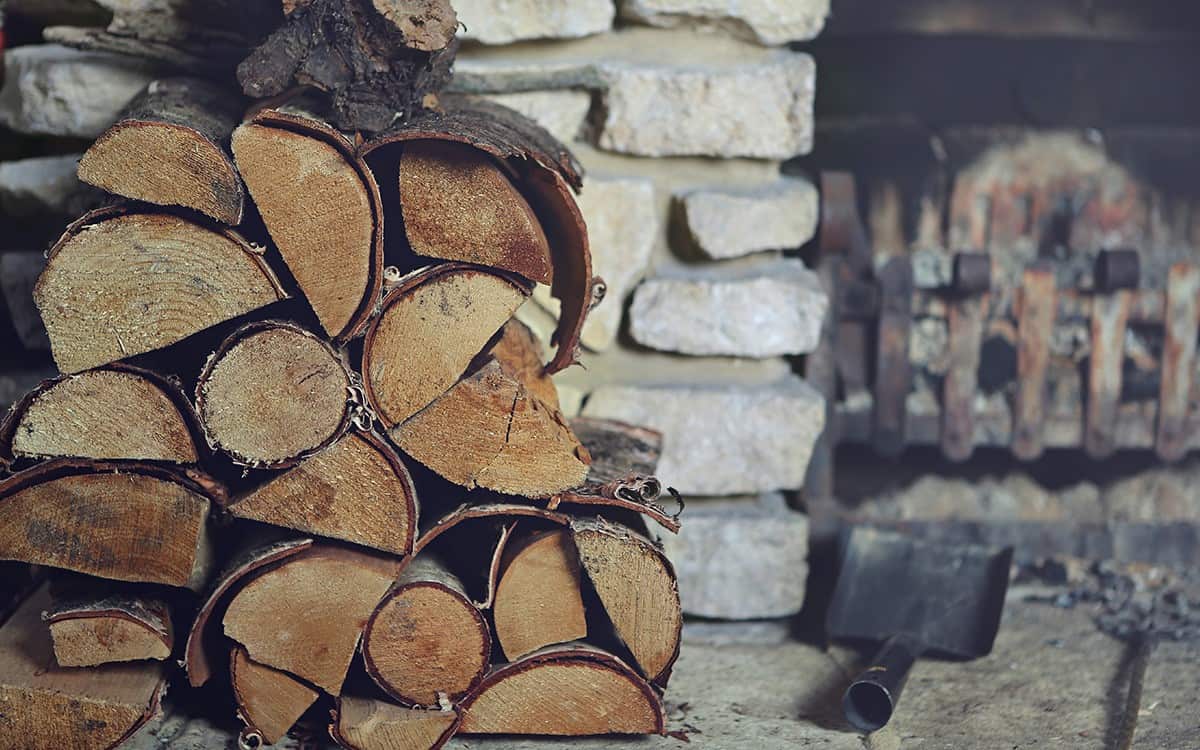
Heating value
Heating value pertains to the amount of energy per mass a specific substance can produce by combusting it. In this case, it is equivalent to the heat that firewood gives off upon burning it.
This property of a certain type of firewood is intrinsic, meaning it is fixed. It is the same for that particular type, and no treatment can modify it. It is usually measured in terms of BTU per pound.
When choosing which firewood to get, you should pick a type that has a high heating value, black locust and oak, for example. These types of wood are the most efficient since a small quantity of them can provide more heat than other types which have low heating value.
Hardwood vs. Softwood
Another criterion you should consider is the firewood’s density; it tells you how compact the wood is. In terms of this property, the types of firewood are divided into two groups: hardwood and softwood.
Hardwood is heavier, and generally, more expensive than softwood. It is more compact, making it harder to cut and chop into pieces. But, this compactness also allows this type of wood to burn longer. It has more material in it; therefore, it lasts longer than softwood.
On the other hand, softwood is lighter and is easier to cut. However, it is not suitable to be used as firewood due to its low density. It burns quickly and produces a low amount of heat.
When in the wild, a fast way to tell whether a tree has hardwood or softwood is its structure. Hardwood trees have leaves, and they branch out in all directions. On the other hand, softwood trees have needles in place of leaves, and they tend to grow straight and develop only a few branches.
Seasoned Wood vs. Unseasoned Wood
The firewood’s moisture content is another factor that you should pay attention to. Ideally, your firewood should have low moisture to make ignition easier and make the burning more efficient at providing heat.
Initially, freshly cut wood has a high moisture content – approximately 60%. To make it usable, you must bring down the water percentage to about 20% through a process called seasoning.
Seasoning means drying the wood by leaving it under the sun for a few months to allow most of its water to evaporate. It usually takes six months to complete the process. However, this length may vary depending on the climate in your area.
A properly seasoned wood, especially hardwood, is the best choice as firewood. Unseasoned wood may still be used, but it will not be as efficient and long-lasting as seasoned wood.
Firewood Best to Worst
Best Types of Firewood
Not all types of wood are suitable as firewood. Depending on the necessary amount of heat and desired longevity of burning, you may prefer one type over the others. Below is a list of the best types of firewood you can choose from:
Black Locust
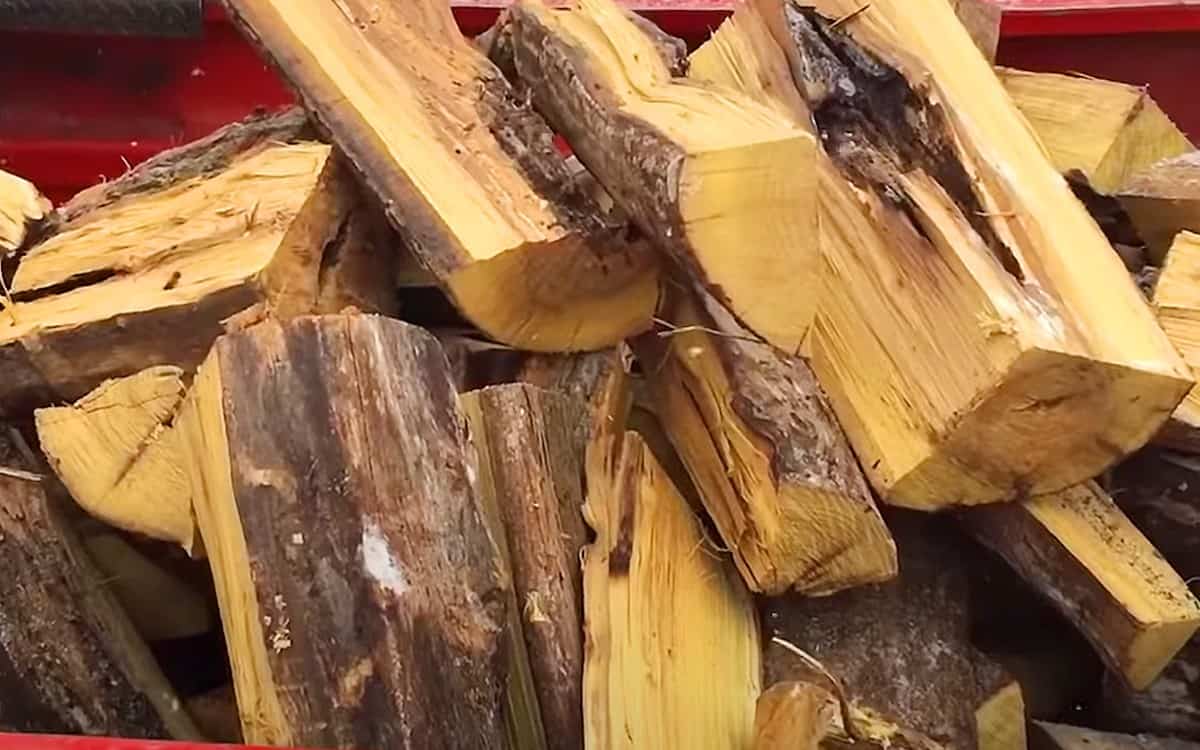
This wood has a very high heating value, making it excellent at producing heat. It is very dense, so it can burn for a long time. It emits a slight fragrance when burning and produces a low amount of smoke and high-quality coals that can burn all night.
It is one of the best types of wood to use as fuel. However, it does not naturally grow in most regions. It is only common throughout Arkansas and Missouri and the Appalachian Mountains.
Due to its high density or compactness, it is also suitable for construction purposes when camping in the wild.
Hickory
Wood from the hickory family of trees, like pecan trees, is known to produce an exceptional amount of heat. It emits minimal smoke and produces high-quality coals when burned, making it ideal for campfires and even BBQ grills.
This type of wood is dense and deprived of moisture, thus hard to split and chop. But, due to these properties, it can last longer and burn better. It is a common type of tree, so you can find it in almost any forest.
Oak
Oak is one of the best all-around wood, and it is fairly common. It has a high heating value and density, making it great at providing continuous, long-lasting, and quality heat. It has a low spark and smoke output, which makes it ideal firewood to use indoors.
The most common types of oak are white and red oak. Both are excellent firewood. However, due to their high density, it might be difficult to ignite them. For this reason, you can use softwood to start a fire and then add oak wood to fuel it.
Oak is one of the most favored types of firewood. It does an excellent job, especially when seasoned adequately.
Beech
Beech is top-tier firewood that provides a stable amount of heat for a decent amount of time. It produces excellent coals and minimal smoke and spark. Its overall quality is on par with that of oak wood.
The only downside of this wood is its moisture content. It needs to be adequately seasoned and thoroughly dried before you can lit it. In addition, it is the hardest firewood to split – it is even harder than black locust and oak wood.
Ash
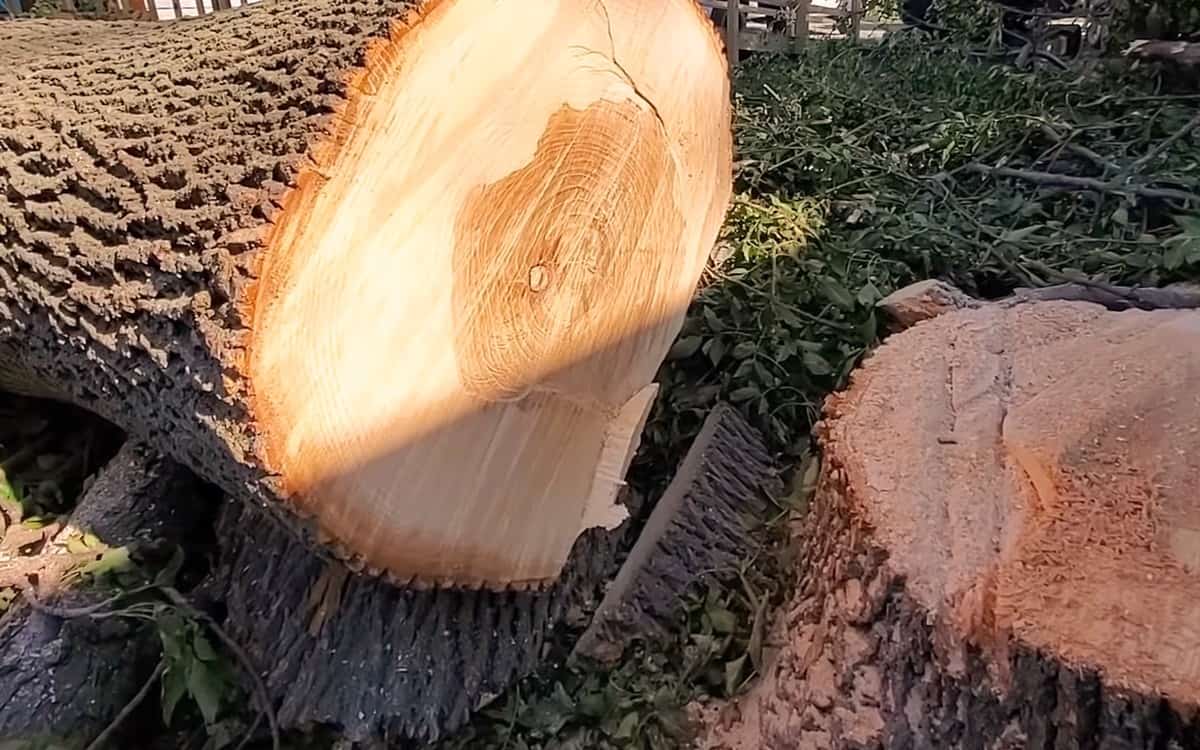
Ash is arguably the best firewood to burn. It has a high heat output, and it can provide a long-lasting flame. It is also easier to lit compared to the previously mentioned types of firewood. Furthermore, it doesn’t have to be seasoned or dried to burn effectively, meaning you can use a relatively fresh wood from an Ash tree as firewood.
Cherry
Cherry only provides a medium amount of heat; it is not as good as heavier and denser woods like Oak and Black Locust. However, it gives off a pleasant aroma while burning.
In addition to its fragrance, it does not produce a significant amount of spark when burned, making it an ideal firewood for indoors. It is an excellent fuel to a fire intended to create a desirable ambience rather than provide heating.
Maple
Maple produces a decent amount of heating, and it can last for a long period. Similar to other types of hardwood, Maple is difficult to split. Further, it is hard to ignite like Oak, so you will need to create fire first with softwood before using it as a fuel.
Birch
Birch only provides an average amount of heat, and it also burns relatively quickly; thus, it is not ideal to be used as the main firewood. However, due to its flammability, it is great at starting and maintaining a fire.
Birch results in bright flames when burned and only produces a small amount of heat, making it ideal for indoors.
Rowan
The best feature of Rowan is that it burns slowly. Hence, it can provide a long-lasting, continuous, and moderate amount of heating. It can be your default firewood since it performs well in all types of fire.
Pine
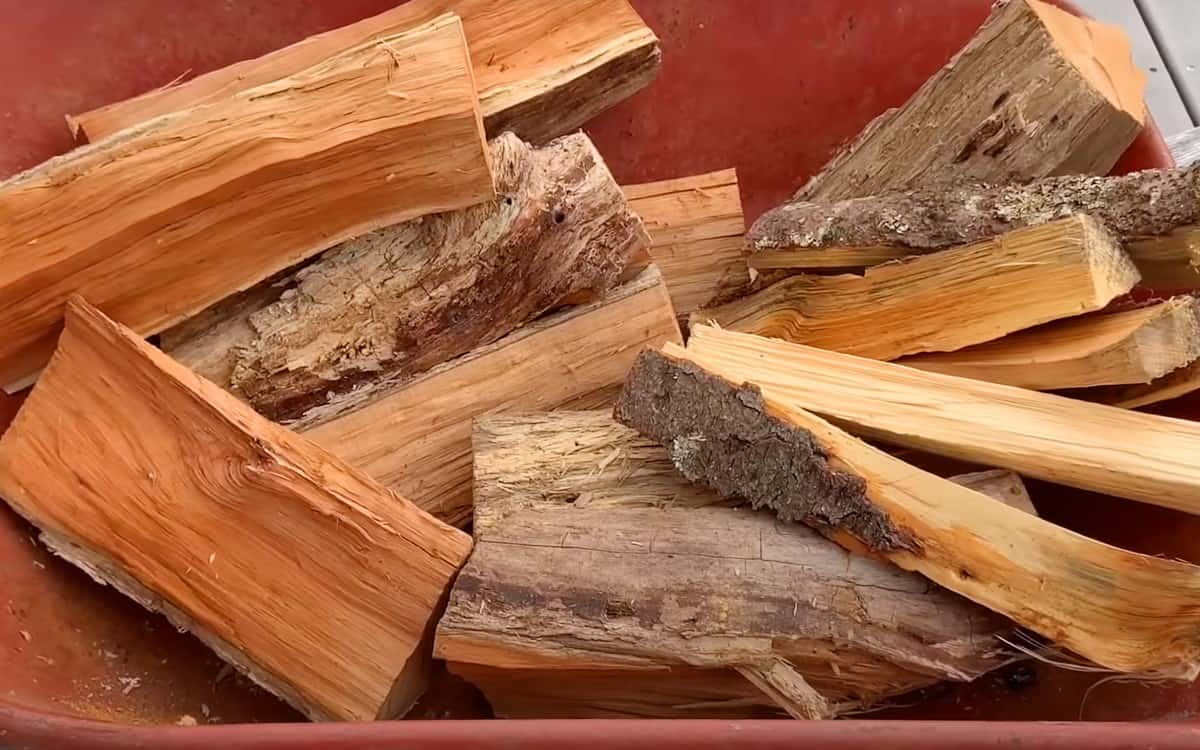
Despite being a softwood, pine is still a good type of firewood, especially for recreational purposes like camping. It provides a decent amount of heat, but at the same time, it generates a relatively high amount of smoke. It is excellent for outdoor campfires, but it should not be used indoors or for functional purposes such as cooking.
Worst Types of Firewood
Some types of firewood may not be as good as the others, but you may still use them if you have no other options. However, the following are the types not suitable for providing long-lasting heat or even dangerous to use, so you should avoid them.
Green Wood
A green wood is basically a freshly cut wood. Although there are some exemptions, freshly cut wood is often inefficient at keeping or even starting a fire. It has significantly higher water content, so you need to season it first for at least six months before you can use it.
A good indication that the wood is ready to be used is its sap – if it is no longer apparent, then it is ready; otherwise, the wood still needs a bit more time to dry out.
Poisonous Wood
Avoid at all cost wood covered with vines. There’s a high possibility that this wood is poison ivy, poison sumac, poison oak, or some other type of tree with poisonous components.
Poisonous wood contains an irritant known as urushiol. When burned, the irritant will mix with the smoke, and when inhaled, it may cause extreme irritation to the lungs and result in severe allergic respiratory problems.
Driftwood
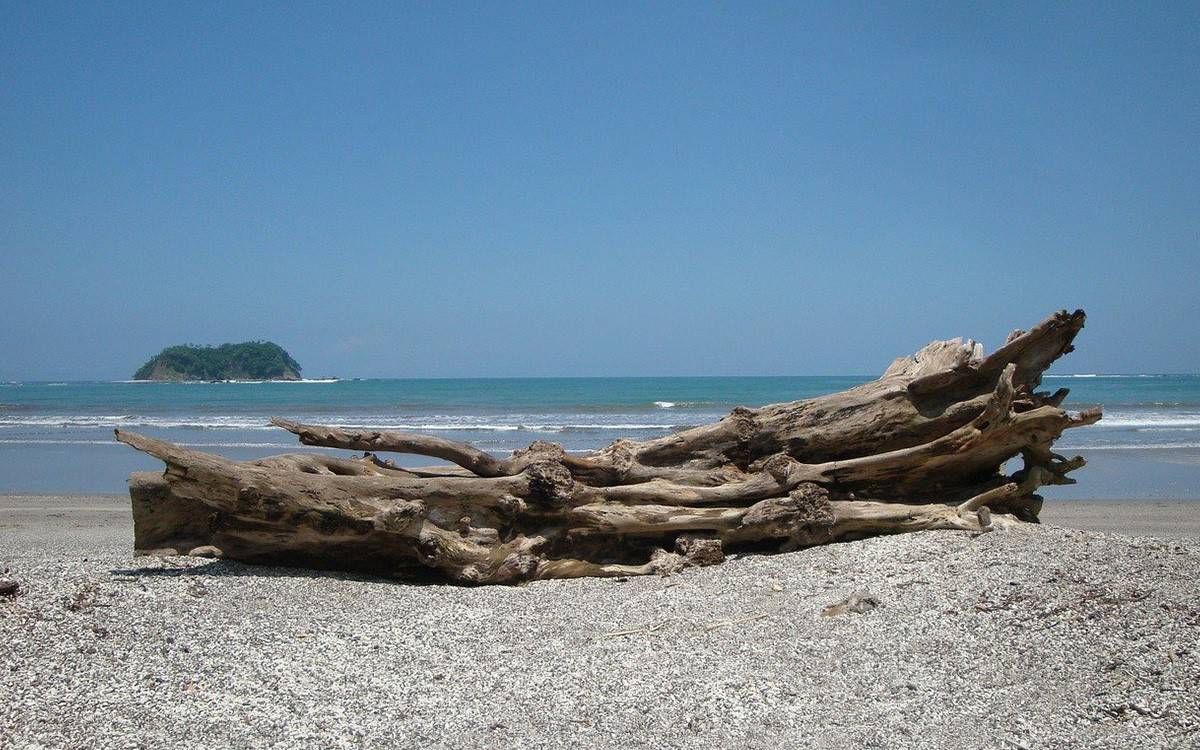
Aside from being extremely damp, driftwood is also saturated in salt. It will be difficult to lit it. In addition, burning it will release a thick smoke filled with toxic chemicals that may be deadly when inhaled in excessive quantities.
Laburnum
Laburnum is a species of wood that generates a very small to no heat at all. Instead, it produces an enormous amount of smoke. It is not particularly harmful, but burning this type of wood is just a waste of time.
Poplar
Poplar is very similar to laburnum. It is ineffective at providing heat and produces a significant amount of smoke. It is also extremely difficult to lit, so do not bother trying to use it.
Final Thoughts
Whether it is for heating or just for creating a cozy ambience, you should select the most suitable firewood to use. Different types of firewood last differently and provide different intensities of heat. Hence, choose accordingly.
Generally, wood with high heating value, high density, and low moisture content is ideal. Stick to types of firewood with these properties – you may use the list presented in this article as your reference. You are free to use other types of firewood; however, be careful not to accidentally pick the worst ones so you can avoid unnecessary inconveniences.

